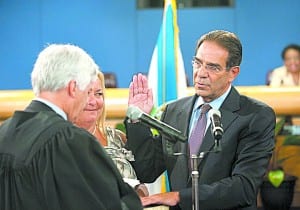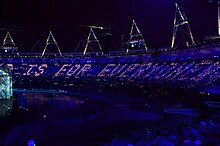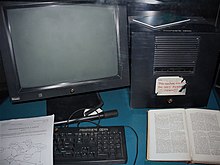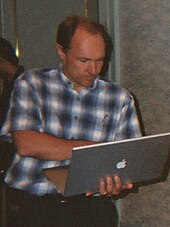 |
| Elizabeth Cochrane, aka Nellie Bly c. 1890 |
Today's Highlight in History:
1889 – Pioneering female journalist Nellie Bly (aka Elizabeth Cochrane) begins a successful attempt to travel around the world in less than 80 days. She completes the trip in 72 days.
Nellie Bly (May 5, 1864 – January 27, 1922) was the pen name of American journalist Elizabeth Jane Cochrane. She was a ground-breaking reporter known for a record-breaking trip around the world in 72 days, in emulation of Jules Verne's fictional character Phileas Fogg, and an exposé in which she faked insanity to study a mental institution from within. She was a pioneer in her field, and launched a new kind of investigative journalism In addition to her writing, she was also an industrialist and charity worker.
She was born Elizabeth Jane Cochran in "Cochran Mills", today in Pennsylvania. Her father, Michael Cochran, was a modest laborer and mill worker who married Mary Jane. Cochran taught his young children a cogent lesson about the virtues of hard work and determination, buying the local mill and most of the land surrounding his family farmhouse.
As a young girl Elizabeth was often called "Pinky" because she so frequently wore the color. As she became a teenager she wanted to portray herself as more sophisticated, and so dropped the nickname and changed her surname to Cochrane. She attended boarding school for one term, but was forced to drop out due to lack of funds.
when her family moved to Pittsburgh 1880. An aggressively misogynistic column titled "What Girls Are Good For" in the Pittsburgh Dispatch prompted her to write a fiery rebuttal to the editor under the pseudonym "Lonely Orphan Girl". The editor George Madden was impressed with her passion an offered her the opportunity to write a piece for the newspaper, again under the pseudonym "Lonely Orphan Girl".
After her first article for the Dispatch, titled "The Girl Puzzle", Madden was impressed again and offered her a full-time job. Female newspaper writers at that time customarily used pen names, and for Cochrane the editor chose "Nellie Bly", adopted from the title character in the popular song "Nelly Bly" by Stephen Foster. She originally intended for her pseudonym to be "Nelly Bly," but her editor wrote "Nellie" by mistake, and the error stuck.
In one report, she protested the imprisonment of a local journalist for criticizing the Mexican government, then a dictatorship under Porfirio Díaz. When Mexican authorities learned of Bly's report, they threatened her with arrest, prompting her to leave the country. Safely home, she denounced Díaz as a tyrannical czar suppressing the Mexican people and controlling the press.
Burdened again with theater and arts reporting, Bly left the Pittsburgh Dispatch in 1887 for New York City. Penniless after four months, she talked her way into the offices of Joseph Pulitzer's newspaper, the New York World, and took an undercover assignment for which she agreed to feign insanity to investigate reports of brutality and neglect at the Women's Lunatic Asylum on Blackwell's Island.
World Events
1889 – Pioneering female journalist Nellie Bly (aka Elizabeth Cochrane) begins a successful attempt to travel around the world in less than 80 days. She completes the trip in 72 days.
1910 – Aviator Eugene Burton Ely performs the first take off from a ship in Hampton Roads, Virginia. He took off from a makeshift deck on the USS Birmingham in a Curtiss pusher.
1916 – World War I: The Battle of the Somme ends.
1918 – Czechoslovakia becomes a republic.
1921 – Foundation of the Communist Party of Spain.
1922 – The British Broadcasting Company begins radio service in the United Kingdom.
1940 – World War II: In England, Coventry is heavily bombed by German Luftwaffe bombers. Coventry Cathedral is almost completely destroyed.
1941 – World War II: In Slonim, German forces engaged in Operation Barbarossa murder 9,000 Jews in a single day.
1952 – The first regular UK Singles Chart published by the New Musical Express.
1957 – The Apalachin Meeting outside Binghamton, New York is raided by law enforcement, and many high level Mafia figures are arrested.
1967 – The Congress of Colombia, in commemoration of the 150 years of the death of Policarpa Salavarrieta, declares this day as "Day of the Colombian Woman".
1967 – American physicist Theodore Maiman is given a patent for his ruby laser systems, the world's first laser.
1975 – Spain abandons Western Sahara.
1979 – Iran hostage crisis: US President Jimmy Carter issues Executive order 12170, freezing all Iranian assets in the United States in response to the hostage crisis.
1984 – Zamboanga City mayor Cesar Climaco, a prominent critic of the government of Philippine President Ferdinand Marcos, is assassinated in his home city.
1990 – After German reunification, the Federal Republic of Germany and Poland sign a treaty confirming the Oder–Neisse line as the border between Germany and Poland.
1991 – American and British authorities announce indictments against two Libyan intelligence officials in connection with the downing of the Pan Am Flight 103.
1991 – Cambodian Prince Norodom Sihanouk returns to Phnom Penh after thirteen years of exile.
1991 – In Royal Oak, Michigan, a fired United States Postal Service employee goes on a shooting rampage, killing four and wounding five before committing suicide.
1995 – A budget standoff between Democrats and Republicans in the U.S. Congress forces the federal government to temporarily close national parks and museums and to run most government offices with skeleton staffs.
2001 – War in Afghanistan: Afghan Northern Alliance fighters take over the capital Kabul.
2008 – The first G-20 economic summit opens in Washington, D.C.
2010 – Germany's Sebastian Vettel of Red Bull Racing wins Formula One's Drivers Championship to become the sport's youngest champion.
2012 – Israel launches a major military operation in the Gaza Strip, as hostilities with Hamas escalate.
when her family moved to Pittsburgh 1880. An aggressively misogynistic column titled "What Girls Are Good For" in the Pittsburgh Dispatch prompted her to write a fiery rebuttal to the editor under the pseudonym "Lonely Orphan Girl". The editor George Madden was impressed with her passion an offered her the opportunity to write a piece for the newspaper, again under the pseudonym "Lonely Orphan Girl".
After her first article for the Dispatch, titled "The Girl Puzzle", Madden was impressed again and offered her a full-time job. Female newspaper writers at that time customarily used pen names, and for Cochrane the editor chose "Nellie Bly", adopted from the title character in the popular song "Nelly Bly" by Stephen Foster. She originally intended for her pseudonym to be "Nelly Bly," but her editor wrote "Nellie" by mistake, and the error stuck.
As a writer, Bly focused her early work for the Dispatch on the plight of working women, writing a series of investigative articles on female factory workers. But editorial pressure pushed her to the so-called "women's pages" to cover fashion, society, and gardening, the usual role for female journalists of the day. Dissatisfied with these duties, she took the initiative and traveled to Mexico to serve as a foreign correspondent. Still only 21, she spent nearly half a year reporting the lives and customs of the Mexican people; her dispatches were later published in book form as Six Months in Mexico.
In one report, she protested the imprisonment of a local journalist for criticizing the Mexican government, then a dictatorship under Porfirio Díaz. When Mexican authorities learned of Bly's report, they threatened her with arrest, prompting her to leave the country. Safely home, she denounced Díaz as a tyrannical czar suppressing the Mexican people and controlling the press.
Burdened again with theater and arts reporting, Bly left the Pittsburgh Dispatch in 1887 for New York City. Penniless after four months, she talked her way into the offices of Joseph Pulitzer's newspaper, the New York World, and took an undercover assignment for which she agreed to feign insanity to investigate reports of brutality and neglect at the Women's Lunatic Asylum on Blackwell's Island.
After a night of practicing deranged expressions in front of a mirror, she checked into a boardinghouse. She refused to go to bed, telling the boarders that she was afraid of them and that they looked "crazy".
They soon decided that she was "crazy", and the next morning summoned the police. Taken to a courtroom, she pretended to have amnesia. The judge concluded she had been drugged.
She was then examined by several doctors, who all declared her to be insane. "Positively demented," said one, "I consider it a hopeless case. She needs to be put where someone will take care of her." The head of the insane pavilion at Bellevue Hospital pronounced her "undoubtedly insane". The case of the "pretty crazy girl" attracted media attention: "Who Is This Insane Girl?" asked the New York Sun.The New York Times wrote of the "mysterious waif" with the "wild, hunted look in her eyes", and her desperate cry: "I can't remember I can't remember."Committed to the asylum, Bly experienced its conditions firsthand. The food consisted of gruel broth, spoiled beef, bread that was little more than dried dough, and dirty undrinkable water.
 |
| Bly being examined by a psychiatrist |
The dangerous patients were tied together with ropes. The patients were made to sit for much of each day on hard benches with scant protection from the cold. Waste was all around the eating places. Rats crawled all around the hospital. The bathwater was frigid, and buckets of it were poured over their heads. The nurses were obnoxious and abusive, telling the patients to shut up, and beating them if they did not. Speaking with her fellow patients, Bly was convinced that some were as sane as she was. On the effect of her experiences, she wrote:
After ten days, Bly was released from the asylum at The World's behest. Her report, later published in book form as Ten Days in a Mad-House, caused a sensation and brought her lasting fame. While embarrassed physicians and staff fumbled to explain how so many professionals had been fooled, a grand jury launched its own investigation into conditions at the asylum, inviting Bly to assist. The jury's report recommended the changes she had proposed, and its call for increased funds for care of the insane prompted an $850,000 increase in the budget of the Department of Public Charities and Corrections. They also made sure that future examinations were more thorough so that only the seriously ill actually went to the asylum.In 1888, Bly suggested to her editor at the New York World that she take a trip around the world, attempting to turn the fictional Around the World in Eighty Days into fact for the first time. A year later, at 9:40 a.m. on November 14, 1889, and with two days' notice, she boarded the Augusta Victoria, a steamer of the Hamburg America Line, and began her 24,899-mile journey.
She brought with her the dress she was wearing, a sturdy overcoat, several changes of underwear and a small travel bag carrying her toiletry essentials. She carried most of her money (£200 in English bank notes and gold in total as well as some American currency) in a bag tied around her neck.
The New York newspaper Cosmopolitan sponsored its own reporter, Elizabeth Bisland, to beat the time of both Phileas Fogg and Bly. Bisland would travel the opposite way around the world.To sustain interest in the story, the World organized a “Nellie Bly Guessing Match” in which readers were asked to estimate Bly’s arrival time to the second, with the Grand Prize consisting at first of a free trip to Europe and, later on, spending money for the trip.
On her travels around the world, Bly went through England, France (where she met Jules Verne in Amiens), Brindisi, the Suez Canal, Colombo (Ceylon), the Straits Settlements of Penang and Singapore, Hong Kong, and Japan. The development of efficient submarine cable networks and the electric telegraph allowed Bly to send short progress reports,though longer dispatches had to travel by regular post and were thus often delayed by several weeks.
Bly travelled using steamships and the existing railroad systems, which caused occasional setbacks, particularly on the Asian leg of her race. During these stops, she visited a leper colony in China and she bought a monkey in Singapore.
As a result of rough weather on her Pacific crossing, she arrived in San Francisco on the White Star Line ship Oceanic on January 21, two days behind schedule. However,World owner Pulitzer chartered a private train to bring her home, and she arrived back in New Jersey on January 25, 1890, at 3:51 p.m.
Just over seventy-two days after her departure from Hoboken, Bly was back in New York. She had circumnavigated the globe, traveling alone for almost the whole journey.Bisland was, at the time, still crossing the Atlantic, only to arrive in New York four and a half days later. Like Bly, she had missed a connection and had to board a slow, old ship (the Bothina) in the place of a fast ship (Etruria).Bly's journey was a world record, though it was bettered a few months later by George Francis Train, who completed the journey in 67 days. By 1913, Andre Jaeger-Schmidt, Henry Frederick and John Henry Mears had improved on the record, the latter completing the journey in less than 36 days.
In 1895 Nellie Bly married millionaire manufacturer Robert Seaman, who was 40 years her senior. She retired from journalism, and became the president of the Iron Clad Manufacturing Co., which made steel containers such as milk cans and boilers. In 1904, her husband died. In the same year, Iron Clad began manufacturing the steel barrel that was the model for the 55-gallon oil drum still in widespread use in the United States.
Although there have been claims that Nellie Bly invented the barrel, the inventor is believed to have been Henry Wehrhahn, who likely assigned his invention to her. (US Patents 808,327 and 808,413). Nellie Bly was, however, an inventor in her own right, receiving US patent 697,553 for a novel milk can and US patent 703,711 for a stacking garbage can, both under her married name of Elizabeth Cochrane Seaman.For a time she was one of the leading female industrialists in the United States, but embezzlement by employees led her into bankruptcy.
Back in reporting, she wrote stories on Europe's Eastern Front during World War I and notably covered the Woman Suffrage Parade of 1913. Her headline for the Parade story was “Suffragists Are Men's Superiors” but she also "with uncanny prescience" predicted in the story that it would be 1920 before women would win the vote.
Nellie Bly died of pneumonia at St. Mark's Hospital in New York City in 1922, at age 57. She was interred in a modest grave at Woodlawn Cemetery in the Bronx
Wikipedia
 |
| A publicity photo taken by the New York World newspaper to promote Bly's around-the-world voyage. |
She brought with her the dress she was wearing, a sturdy overcoat, several changes of underwear and a small travel bag carrying her toiletry essentials. She carried most of her money (£200 in English bank notes and gold in total as well as some American currency) in a bag tied around her neck.
The New York newspaper Cosmopolitan sponsored its own reporter, Elizabeth Bisland, to beat the time of both Phileas Fogg and Bly. Bisland would travel the opposite way around the world.To sustain interest in the story, the World organized a “Nellie Bly Guessing Match” in which readers were asked to estimate Bly’s arrival time to the second, with the Grand Prize consisting at first of a free trip to Europe and, later on, spending money for the trip.
On her travels around the world, Bly went through England, France (where she met Jules Verne in Amiens), Brindisi, the Suez Canal, Colombo (Ceylon), the Straits Settlements of Penang and Singapore, Hong Kong, and Japan. The development of efficient submarine cable networks and the electric telegraph allowed Bly to send short progress reports,though longer dispatches had to travel by regular post and were thus often delayed by several weeks.
Bly travelled using steamships and the existing railroad systems, which caused occasional setbacks, particularly on the Asian leg of her race. During these stops, she visited a leper colony in China and she bought a monkey in Singapore.
As a result of rough weather on her Pacific crossing, she arrived in San Francisco on the White Star Line ship Oceanic on January 21, two days behind schedule. However,World owner Pulitzer chartered a private train to bring her home, and she arrived back in New Jersey on January 25, 1890, at 3:51 p.m.
Just over seventy-two days after her departure from Hoboken, Bly was back in New York. She had circumnavigated the globe, traveling alone for almost the whole journey.Bisland was, at the time, still crossing the Atlantic, only to arrive in New York four and a half days later. Like Bly, she had missed a connection and had to board a slow, old ship (the Bothina) in the place of a fast ship (Etruria).Bly's journey was a world record, though it was bettered a few months later by George Francis Train, who completed the journey in 67 days. By 1913, Andre Jaeger-Schmidt, Henry Frederick and John Henry Mears had improved on the record, the latter completing the journey in less than 36 days.
 |
| Nellie Bly in her later years |
In 1895 Nellie Bly married millionaire manufacturer Robert Seaman, who was 40 years her senior. She retired from journalism, and became the president of the Iron Clad Manufacturing Co., which made steel containers such as milk cans and boilers. In 1904, her husband died. In the same year, Iron Clad began manufacturing the steel barrel that was the model for the 55-gallon oil drum still in widespread use in the United States.
Although there have been claims that Nellie Bly invented the barrel, the inventor is believed to have been Henry Wehrhahn, who likely assigned his invention to her. (US Patents 808,327 and 808,413). Nellie Bly was, however, an inventor in her own right, receiving US patent 697,553 for a novel milk can and US patent 703,711 for a stacking garbage can, both under her married name of Elizabeth Cochrane Seaman.For a time she was one of the leading female industrialists in the United States, but embezzlement by employees led her into bankruptcy.
Back in reporting, she wrote stories on Europe's Eastern Front during World War I and notably covered the Woman Suffrage Parade of 1913. Her headline for the Parade story was “Suffragists Are Men's Superiors” but she also "with uncanny prescience" predicted in the story that it would be 1920 before women would win the vote.
Nellie Bly died of pneumonia at St. Mark's Hospital in New York City in 1922, at age 57. She was interred in a modest grave at Woodlawn Cemetery in the Bronx
Wikipedia
World Events
1889 – Pioneering female journalist Nellie Bly (aka Elizabeth Cochrane) begins a successful attempt to travel around the world in less than 80 days. She completes the trip in 72 days.
1910 – Aviator Eugene Burton Ely performs the first take off from a ship in Hampton Roads, Virginia. He took off from a makeshift deck on the USS Birmingham in a Curtiss pusher.
1916 – World War I: The Battle of the Somme ends.
1918 – Czechoslovakia becomes a republic.
1921 – Foundation of the Communist Party of Spain.
1922 – The British Broadcasting Company begins radio service in the United Kingdom.
1940 – World War II: In England, Coventry is heavily bombed by German Luftwaffe bombers. Coventry Cathedral is almost completely destroyed.
1941 – World War II: In Slonim, German forces engaged in Operation Barbarossa murder 9,000 Jews in a single day.
1952 – The first regular UK Singles Chart published by the New Musical Express.
1957 – The Apalachin Meeting outside Binghamton, New York is raided by law enforcement, and many high level Mafia figures are arrested.
1967 – The Congress of Colombia, in commemoration of the 150 years of the death of Policarpa Salavarrieta, declares this day as "Day of the Colombian Woman".
1967 – American physicist Theodore Maiman is given a patent for his ruby laser systems, the world's first laser.
1975 – Spain abandons Western Sahara.
1979 – Iran hostage crisis: US President Jimmy Carter issues Executive order 12170, freezing all Iranian assets in the United States in response to the hostage crisis.
1984 – Zamboanga City mayor Cesar Climaco, a prominent critic of the government of Philippine President Ferdinand Marcos, is assassinated in his home city.
1990 – After German reunification, the Federal Republic of Germany and Poland sign a treaty confirming the Oder–Neisse line as the border between Germany and Poland.
1991 – American and British authorities announce indictments against two Libyan intelligence officials in connection with the downing of the Pan Am Flight 103.
1991 – Cambodian Prince Norodom Sihanouk returns to Phnom Penh after thirteen years of exile.
1991 – In Royal Oak, Michigan, a fired United States Postal Service employee goes on a shooting rampage, killing four and wounding five before committing suicide.
1995 – A budget standoff between Democrats and Republicans in the U.S. Congress forces the federal government to temporarily close national parks and museums and to run most government offices with skeleton staffs.
2001 – War in Afghanistan: Afghan Northern Alliance fighters take over the capital Kabul.
2008 – The first G-20 economic summit opens in Washington, D.C.
2010 – Germany's Sebastian Vettel of Red Bull Racing wins Formula One's Drivers Championship to become the sport's youngest champion.
2012 – Israel launches a major military operation in the Gaza Strip, as hostilities with Hamas escalate.

















